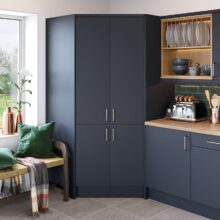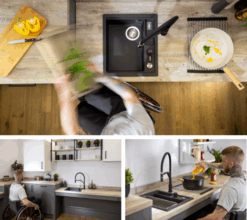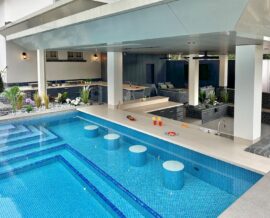Get the iconic chequerboard look
Classic black and white chequerboard floors have their origins in ancient Egypt, Greece and Rome. The bold juxtaposition of black and white tiles was symbolic of harmony, representing light and darkness held in perfect balance.
From the cathedrals of the Middle Ages to the 17th century Palace of Versailles, chequerboard floors carried right through into the 20th century, when they were taken up in succession by Art Deco designers and 1930’s Modernists. They are the perfect definition of a style icon.
Today, chequerboard floors bring geometric drama to contemporary interiors. Lapicida offer them in sizes ranging from micro-mosaic up to large flagstones; with materials including new and reclaimed marbles, limestones and porcelains creating a wide choice of different aesthetics and price points.
Black and white tiles are often used to define hallways, but interior designers areincreasingly using them for other areas of the home, including bathrooms, where they also make striking feature walls in showers or cloakrooms. In large open-plan, multi-purpose spaces such as kitchen/living rooms, patterned areas can be laid together with co-ordinating plains to define particular zones.
Forming a direct connection between the classical world and today’s interiors, the simple geometry of black and white tiles defines them as a modern classic, offering a wealth of new design potential.






